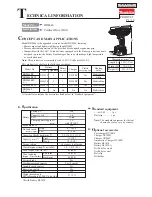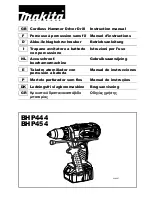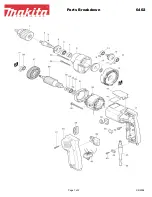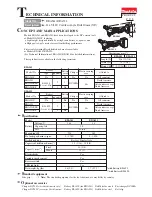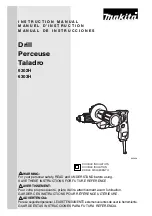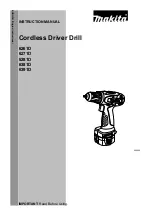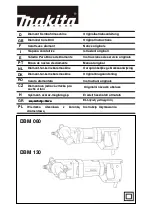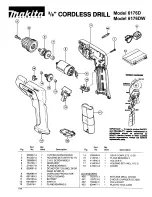
Page 5
For technical questions, please call 1-888-866-5797.
Item 63433
S
AFET
y
Op
ERA
TION
M
AINTENAN
c
E
S
ETU
p
16. The warnings, precautions, and instructions
discussed in this instruction manual cannot cover all
possible conditions and situations that may occur.
It must be understood by the operator that
common sense and caution are factors
which cannot be built into this product,
but must be supplied by the operator.
Vibration Safety
This tool vibrates during use.
Repeated or long-term exposure to vibration may
cause temporary or permanent physical injury,
particularly to the hands, arms and shoulders.
To reduce the risk of vibration-related injury:
1. Anyone using vibrating tools regularly or for
an extended period should first be examined
by a doctor and then have regular medical
check-ups to ensure medical problems are not
being caused or worsened from use. Pregnant
women or people who have impaired blood
circulation to the hand, past hand injuries,
nervous system disorders, diabetes, or
Raynaud’s Disease should not use this tool.
If you feel any symptoms related to vibration (such
as tingling, numbness, and white or blue fingers),
seek medical advice as soon as possible.
2. Do not smoke during use. Nicotine reduces
the blood supply to the hands and fingers,
increasing the risk of vibration-related injury.
3. Wear suitable gloves to reduce the
vibration effects on the user.
4. Use tools with the lowest vibration
when there is a choice.
5. Include vibration-free periods each day of work.
6. Grip tool as lightly as possible (while still keeping
safe control of it). Let the tool do the work.
7. To reduce vibration, maintain the tool as
explained in this manual. If any abnormal
vibration occurs, stop use immediately.
Silicosis Safety Measures
Masonry drilling on materials such as concrete
(which contains crystalline silica) can cause silicosis
(a serious lung disease), cancer and death. To
reduce crystalline silica exposures in the workplace
and prevent silicosis and silicosis-related deaths:
1. Conduct air monitoring to measure
worker exposures.
2. Use containment methods to control the hazard
and protect adjacent workers from exposure.
3. Practice good personal hygiene to avoid
unnecessary exposure to silica dust.
4. Wear washable or disposable protective
clothes at the work site. Shower and change
into clean clothes before leaving the work site
to prevent contamination of cars, homes and
other work areas. Avoid skin exposure.
5. Always wear a NIOSH approved respirator and
safety goggles. Ventilate the work area properly.
6. Provide periodic medical examinations for all
workers who may be exposed to crystalline silica.
7. Post signs to warn workers about the hazard and to
inform them about required protective equipment.
8. Provide workers with training that includes
information about health effects, work practices
and protective equipment for crystalline silica.
9. Report all cases of silicosis to State health
departments and to OSHA or the Mine Safety
and Health Administration (MSHA).
SAVE THESE INSTRUcTIONS.

















